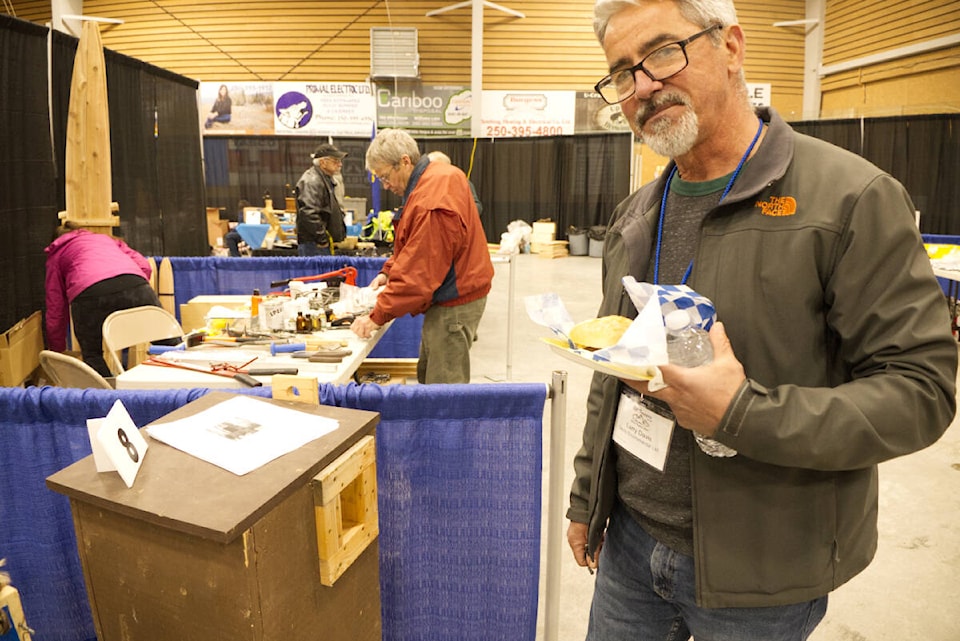Red-listed fishers have found a helping hand from a biologist in 108 Mile Ranch.
Larry Davis, of Davis Environmental Ltd., has designed a fisher den box, an insulated wooded box that can be hung from trees to provide habitat for the endangered mammals. The box is aimed at providing habitat for female fishers, especially in areas affected by deforestation.
Fishers are considered endangered in the central Interior and of special concern in northeastern B.C.
“We started this study in 2013 to try and just get more breeding habitat because of loss of big trees,” Davis told the Free Press during a public open house at the B.C. Trappers’ Convention recently.
The insulated boxes are placed about eight feet up in a tree, offering a haven for females who need a place to give birth in April. About 50 boxes were placed in the Central Interior, resulting in 12 females coming repeatedly, bearing one to three kits, by the end of the study in 2019.
He noted the fishers are red-listed in this area, for a variety of reasons. Genetic evidence shows the fishers on this side of the Rocky Mountains are different from those on the other side of the Rocky Mountain, likely due to glaciation. Those in B.C. have lower birth rates, inconsistent litters and fewer kits, Davis said. Only about 60 per cent survive.
It’s important to help them, he said, because they are midsized carnivore that helps to control all sorts of smaller mammals such as mice, voles and snowshoe hares.
“We would like forest industry to leave more habitat for them and can actually benefit them by maintaining prey levels at levels that don’t damage the forest,” Davis said. “We’ve done some research that shows in 10 per cent young clear cuts, the fishers disappear.”
Fishers can make do with a mix of forests “anywhere you have spruce forests you’re going to have fishers as long as not too many clear cuts.” They need a large forested area - 30 sq. km - to survive, compared with martens, which only need about one km square if it’s good habitat.
Biologists have also been testing fisher exclusion boxes - an elongated marten cubby fitted with a faceplate that is sized to prevent fishers from getting in - for years.
“We’re encouraging trappers to use fisher exclusion boxes and find other ways to avoid getting fishers as a bycatch.”
